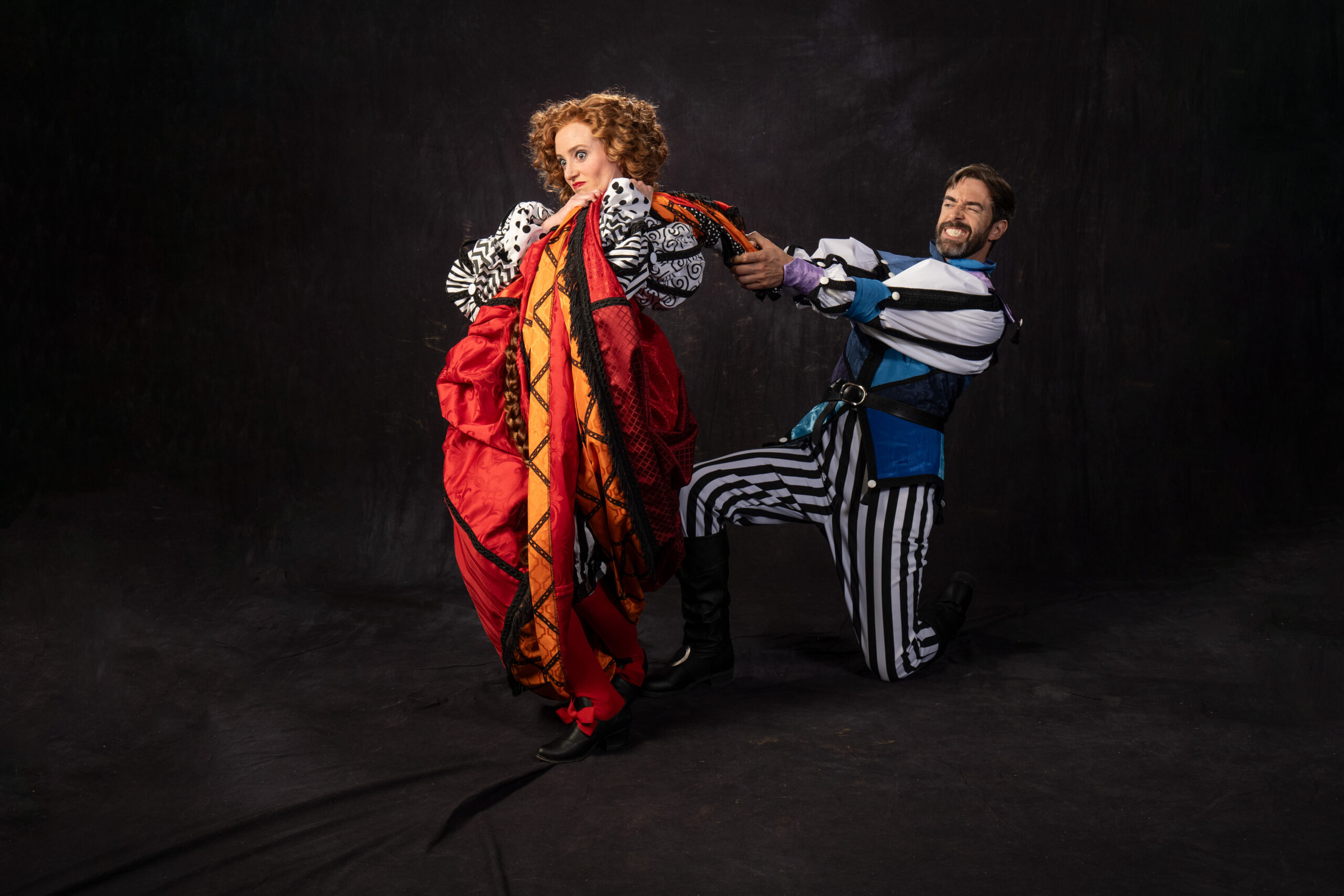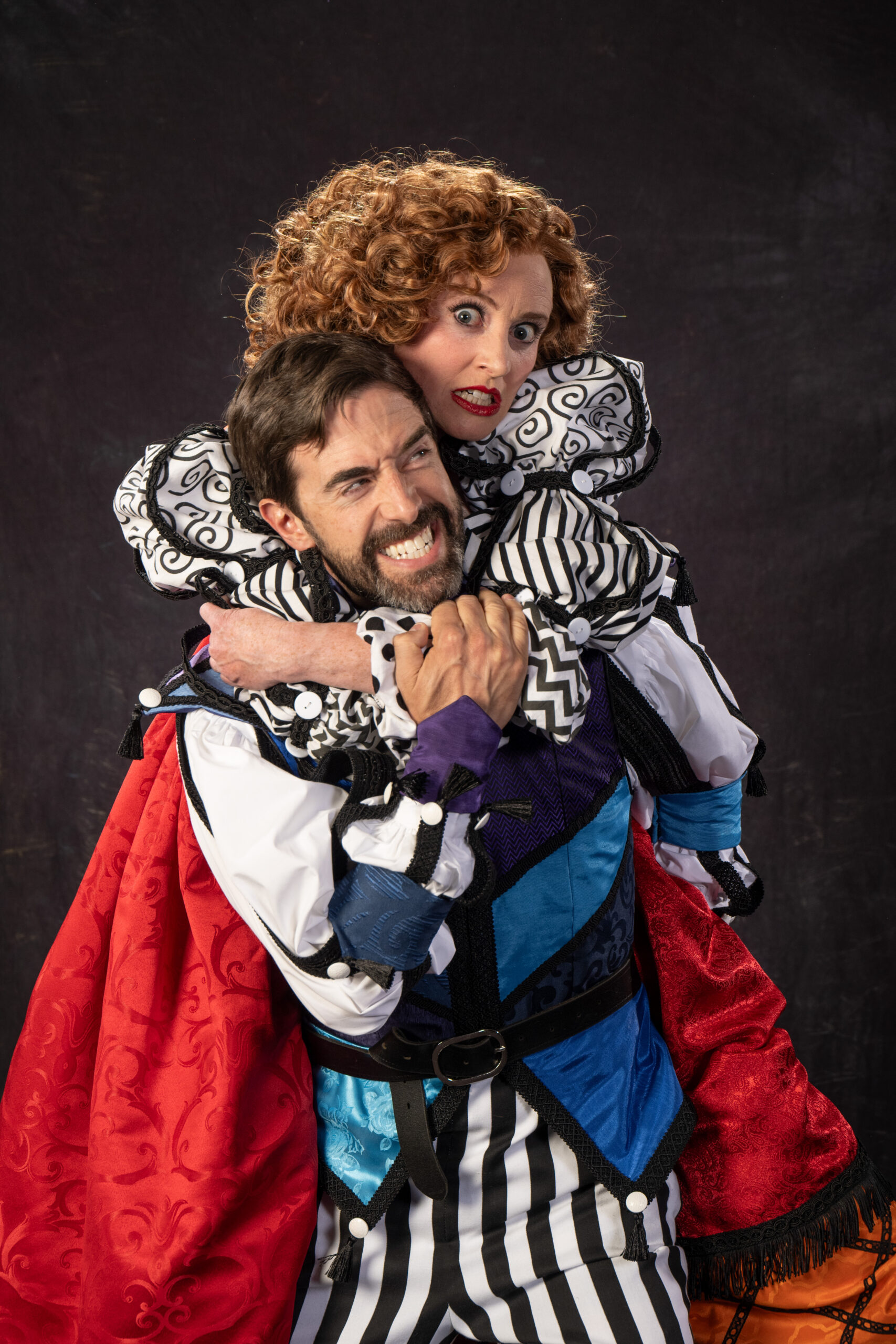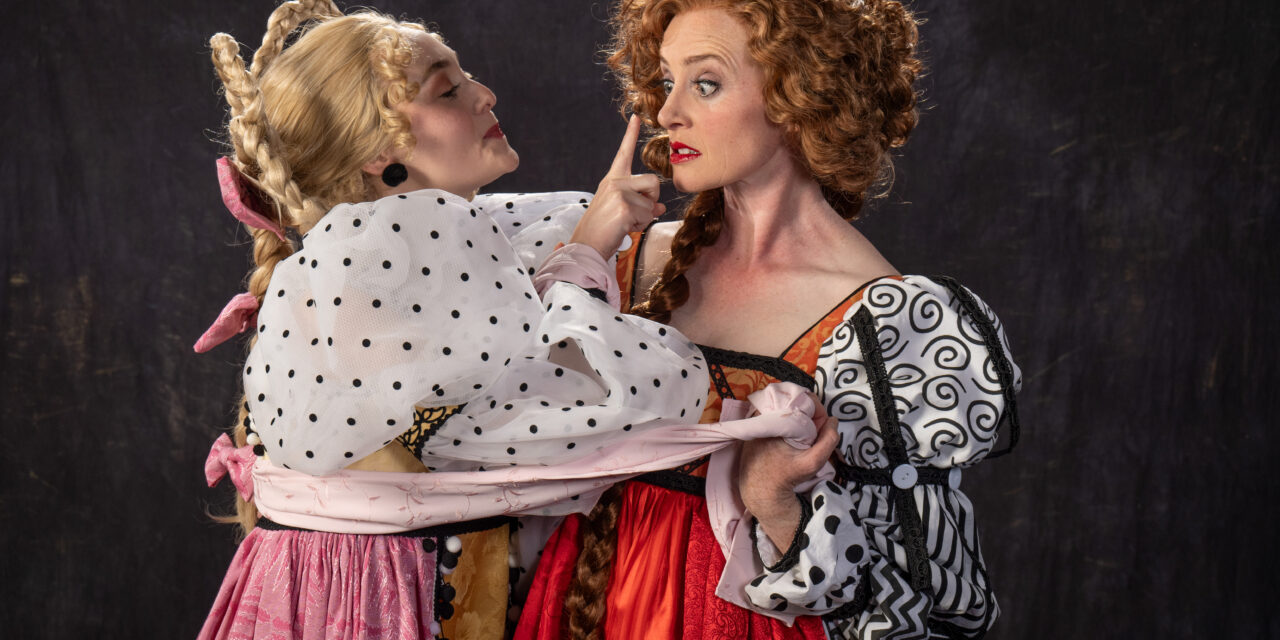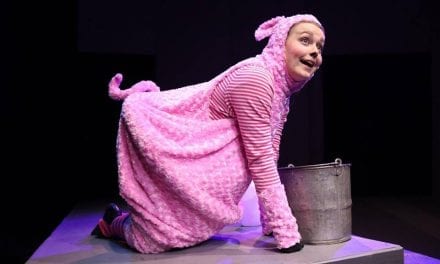CEDAR CITY — The Engelstad Shakespeare Theatre was awash with laughter on Saturday for the opening night of The Taming of the Shrew. Packed with zany comedy and ingenious comedic performances, Utah Shakespeare Festival’s madcap production showed why it’s the play they’ve staged more than any other in their history.
The plot involves gold-digger Petruchio, who weds the unhinged Kate on account of her considerable dowry, and his subsequent efforts to tame her wild ways. While the premise can be problematic by 2024 standards, director Valerie Rachelle showcased various creative and heartwarming solutions to bring out the truth and equity in this battle of the sexes.
The production opens with the owners of an inn attempting to teach a violent drunk to stop treating other people so poorly. So they invite a group of traveling thespians to stage a play about someone else who needed to learn a similar lesson: a ferocious, self-involved woman named Kate.
The moment the play-within-a-play begins, the style of the production changes into a carnival atmosphere with a big dance number by actors in gaudy jester costumes. Fluorescent pink and yellow Dr. Seuss-style backdrops are unveiled along with a fake proscenium arch. This massive shift in tone makes it clear that we’d left reality and its constraints behind—giving the production more freedom for people (like husbands and wives) to act differently than they normally would.

Caitlin Wise (left) as Kate and John DiAntonio as Petruchio from the 2024 production of The Taming of the Shrew. Photo by Karl Hugh. Copyright Utah Shakespeare Festival 2024. Show closes September 7.
The production’s treatment of Kate also helps establish separation between the ancient text and the modern audience. Caitlin Wise’s Kate was more feral cat than woman—a Tasmanian Devil of hissing ferocity, attacking everyone around her in a red-and-orange dress that made her look like an uncontrollable fire. Whatever Petruchio’s role in the matter, it was clear she was a creature in obvious need of rehabilitation.
While the production contains some heartfelt messages toward the end (more on that later), the main draw is the comedy. And boy, is it funny. Once the play-within-a-play begins, the laughs never stop. We’re talking laugh-til-you-cry laughter. Standing ovation laughter. The kind of humor that comes when a production takes the time to milk the comedy out of every possible word. From slapstick to wordplay, from foley to bawdiness, the production throws everything at the wall, and most of it sticks.
Rodney Lizcano and John Harrell are invincible comedic forces as rival suitors Hortensio and Gremio, vying for the hand of Kate’s supposedly more appealing sister, Bianca. Lizcano’s expressions alone garnished peals of laughter, and Hortensio’s, ahem, music lesson to Bianca was clearly the best scene of the night. I’m still smiling at how he passionately mouthed every word of her scales and his careful pronunciation of the word “instrument.”
Traditionally, their desired Bianca (played by Valerie Martire) is a bland, ingénue. Here, she’s a daddy’s girl; a spoiled blonde brat with Whoville hair who gets everything she wants. Chris Mixon played their father, and just like in The Winter’s Tale, he nailed every line with impeccable comedic delivery and timing, transforming simple lines like “I know not what to say” into riots.
Festival artistic director John DiAntonio played Kate’s husband with swaggering confidence and an unsurprising (but no less impressive) ease with the text. Despite purposely acting insane (echos of Hamlet?) and being a braggadocios cad, DiAntonio impressively creates a solid emotional base for the play with Petruchio. He and Wise also display great physicality in their various, thrillingly choreographed wrestling matches, and in their later tender displays of affection.

Caitlin Wise (top) as Kate and John DiAntonio as Petruchio from the 2024 production of The Taming of the Shrew. Photo by Karl Hugh. Copyright Utah Shakespeare Festival 2024.
The off-kilter world of the play is supported by incidental carnival music by Lindsay Jones, who also served as sound designer, and a vast array of ridiculous costumes by K.L. Alberts. In this world, everyone is a clown, with a smorgasbord of neon colors and black and white checks and stripes. Alberts also uses color to subtly link characters—like how Baptista’s outfit features both Kate’s oranges and reds, and Bianca’s pinks.
Instead of ending the play on Kate’s big speech, Rachelle’s direction added poignant physical action to show Kate and Petruchio as equal partners. Petruchio matches her in physical submissiveness as he lays his hand on the ground, then takes the object lesson a step further by kneeling before her and placing a shoe on her foot, Cinderella style. This submissive action is then repeated by Sly the drunkard, showing that the play has taught him the value of putting others first. These tender moments drive home the message that spouses must be flexible enough to go along with their partners’ nuttiness sometimes. Life and marriage are crazy games without rules—why not play along with someone crazy as you?
With its stark separation between the “real” world and play within a play and over-the-top comedy and characters, Utah Shakespeare Festival’s The Taming of the Shrew transcends its basic plot for a delightful and didactic comedy fit for the modern audience. I wholeheartedly recommend it for anyone looking for a laugh—or a few hundred.





